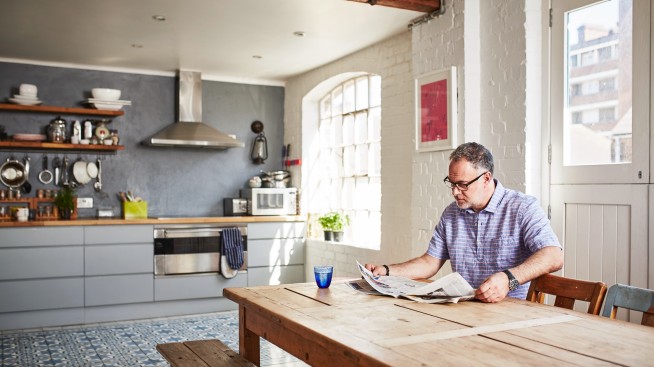Can you use home equity to buy a second house?

The article is for educational purposes only. JPMorgan Chase Bank, N.A., currently offers home equity lines of credit (HELOCs) in select states and does not offer home equity loans in any state. Please talk with a Home Lending Advisor to see if HELOCs are available in your area. Any information described in this article may vary by lender.
Quick insights
- With enough home equity, you might be able to cover the down payment or entire purchase of a second home.
- There are multiple ways to access home equity, including a home equity loan, line of credit (HELOC) and cash-out refinance.
- Using home equity in any of these ways creates additional debt, but the pros might outweigh the cons depending on your goals and situation.
Home equity is commonly used for home improvements, debt consolidation and purchasing additional properties. Maybe you’ve always wanted a beach house or mountain getaway. In this article, we’ll review how you might use home equity to purchase a second home or another property.
How to use home equity for a second home
When you access your home equity, you borrow against it in the form of a loan, line of credit or cash-out refinance. The amount you can access in any of these ways will determine if you can buy a second property outright or at least make the down payment. Below we’ve provided a basic overview of how the process can work.
1. Determine your home equity
Equity builds as you make mortgage payments toward the principal and the property’s value increases. Your current equity is calculated by subtracting the amount you owe on your mortgage from the home’s current market value. For example, if your home is valued at $300,000, and your outstanding mortgage principal is $200,000, you’d have $100,000 in equity.
2. Decide how to access the equity
Many lenders offer several financial products that could help you buy a second home:
- Home equity loan: Provides a lump sum of money that can be used through withdrawals, transfers and direct payments.
- HELOC: Offers a credit line that you can draw from for a certain period. There are different ways to access a HELOC which vary by lender.
- Cash-out refinance: Creates a sum of money by refinancing your mortgage for more than the current outstanding balance.
A lender will decide how much of your home’s current equity it will lend to you. The decision is based on several factors.
3. Understand the terms and requirements
The repayment terms, such as the interest rate, are important to understand regardless of how you access your home equity. You can contact lenders to compare the terms and requirements of their offers. However, before providing the terms of a home equity loan, HELOC or cash-out refinance, each lender may require your financial information and a home appraisal.
4. Apply
Once you choose a lender, you can complete an application to access your home equity. The lender sets its own qualification criteria, but common requirements include your certain credit score, debt-to-income ratio and current home equity.
5. Use the funds for your second home
Whatever you choose—cash-out refinance, home equity loan or HELOC—you may be able to go through the homebuying process after closing. The money or credit line provided gives you a way of funding the purchase of your second property.
Can you use a HELOC to buy another house?
With a HELOC, you may be able to finance the purchase of a second house. This will vary by lender and how they allow you to access the funds. There will still be a limit to what you can spend.
Using a home equity loan to buy another house
Because a home equity loan provides a lump sum, you usually choose a certain type of account for the deposit. If that’s a checking or savings account, you can likely make withdrawals, submit transfers and write checks to fund a second home purchase.
Advantages of using home equity to buy another property
You might find that accessing your home equity for a second home has several potential benefits.
Access to money
With a home equity loan, you receive a lump sum. You don’t need to use all of it, but you’ll pay predetermined monthly principal and interest payment for the borrowed loan. With a HELOC, you can draw from it as needed. For example, maybe you’d use some of a HELOC for the down payment on your second home and another portion for renovations to your current residence.
More favorable loan terms than alternative forms of debt
Home equity loans and HELOCs might have lower interest rates compared to personal loans and credit cards. The interest rate and repayment period vary, and evaluating options from different lenders can help you select the terms that fit your situation.
Disadvantages of using home equity to buy a second home
As with many financial tools, some potential drawbacks are worth understanding before making a choice:
Additional debt
Using home equity to assist a second home purchase means taking on additional debt. This can be a useful financial tool, but it tends to create a new monthly payment for your budget and cost interest over time. Plus, there could be closing costs and fees depending on the home equity product, amount and lender. Repaying loans and credit lines on schedule is important to maintaining financial health.
Reduced equity
You’ll reduce your home equity when you borrow against it. This might prevent you from tapping home equity in the future or risk foreclosure if payments become unmanageable. In addition, if property values decline, and most of your home equity has been used in a loan or HELOC, you might owe more than the home is worth.
Alternatives to buying a second home with equity
Here are a few additional options besides using your home equity for another property:
- Savings or investments: Instead of using home equity, you might be able to access savings or liquidate investments to buy a second home. This strategy could avoid taking on additional debt or using your primary residence as collateral.
- Personal loans: These tend to come with fixed interest rates and monthly payments. The result might make your financial plans more straightforward. Chase does not offer this type of loan.
In summary
It is possible to leverage your home equity and purchase a second home or property. Home equity loans, HELOCs and cash-out refinances basically allow you to turn equity into money. There are pros and cons to taking on debt in any of these ways, along with several alternatives to understand. Depending on your goals and situation, using home equity to purchase another property could be the right choice.



